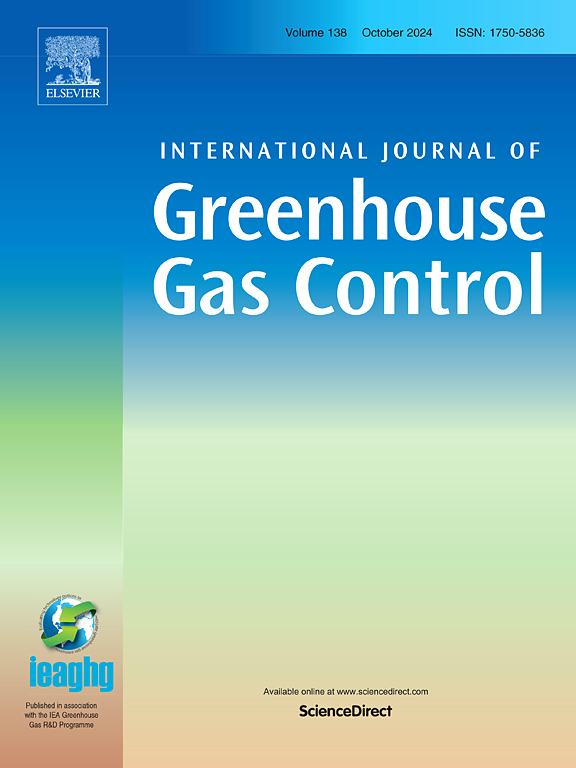盖层完整性:维也纳盆地碳捕获和封存的关键因素
IF 4.6
3区 工程技术
Q2 ENERGY & FUELS
International Journal of Greenhouse Gas Control
Pub Date : 2025-07-12
DOI:10.1016/j.ijggc.2025.104434
引用次数: 0
摘要
人们普遍认为,为了实现碳排放目标和减少人为气候变化的影响,需要地质封存二氧化碳。虽然碳捕集与封存(CCS)在咸水含水层和枯竭油气田的可行性已得到证实,但社会对向地质地层注入二氧化碳的接受程度仍然很低。大多数正在开发的站点位于海上,而陆上存储通常被认为更为关键。储存库屏障层的长期完整性被认为是审批程序中需要承认的主要风险因素。因此,本研究旨在全面了解维也纳盆地泥岩的二氧化碳封存能力,维也纳盆地是未来在枯竭油气田或含盐含水层进行陆上CCS的潜在目标区域。首先,根据电缆测井得出的孔隙度与深度趋势,对静态毛细管密封能力进行建模。其次,确定了所有可能导致二氧化碳突破密封的过程,并量化了它们各自对二氧化碳泄漏的贡献。最后,建立了一维反应输运模型,以评估已知成分和地层水化学的封闭层在1000 - 10万年后的矿物学和孔隙度变化。对于静态和动态密封方案,维也纳盆地的密封容量都很高,与顶部密封完整性相关的存储风险可能可以忽略不计。本文章由计算机程序翻译,如有差异,请以英文原文为准。
Caprock integrity: A critical factor for carbon capture and storage in the Vienna Basin
It is commonly accepted that geologic CO2 sequestration will be needed to meet carbon emission goals and reduce the impact of anthropogenic climate change. While the feasibility of carbon capture and storage (CCS) in saline aquifers and depleted oil and gas fields is proven, the social acceptance for CO2 injection into geological formations remains low. Most sites under development are located offshore, while onshore storage is generally perceived more critically. The long-term integrity of barrier layers in the storage complex is considered a major risk factor to be acknowledged in approval procedures. This study therefore aims at providing a comprehensive view on the CO2 seal capacity of mudstones in the Vienna Basin, a potential target area for future onshore CCS in depleted oil and gas fields or saline aquifers. In a first step, the static capillary seal capacity was modelled based on wireline log-derived porosity vs. depth trends. Secondly, all processes potentially causing a CO2 breakthrough into the seal were identified and their respective contributions to CO2 leakage from a hypothetical storage complex were quantified. Lastly, a 1D reactive transport model was established to evaluate mineralogy and porosity changes in a seal layer of known composition and formation water chemistry over post-operational time spans of 1000–100,000 years. For both static and dynamic sealing scenarios it is shown that seal capacity in the Vienna Basin is high, and storage risks associated with top seal integrity are likely negligible.
求助全文
通过发布文献求助,成功后即可免费获取论文全文。
去求助
来源期刊
CiteScore
9.20
自引率
10.30%
发文量
199
审稿时长
4.8 months
期刊介绍:
The International Journal of Greenhouse Gas Control is a peer reviewed journal focusing on scientific and engineering developments in greenhouse gas control through capture and storage at large stationary emitters in the power sector and in other major resource, manufacturing and production industries. The Journal covers all greenhouse gas emissions within the power and industrial sectors, and comprises both technical and non-technical related literature in one volume. Original research, review and comments papers are included.

 求助内容:
求助内容: 应助结果提醒方式:
应助结果提醒方式:


